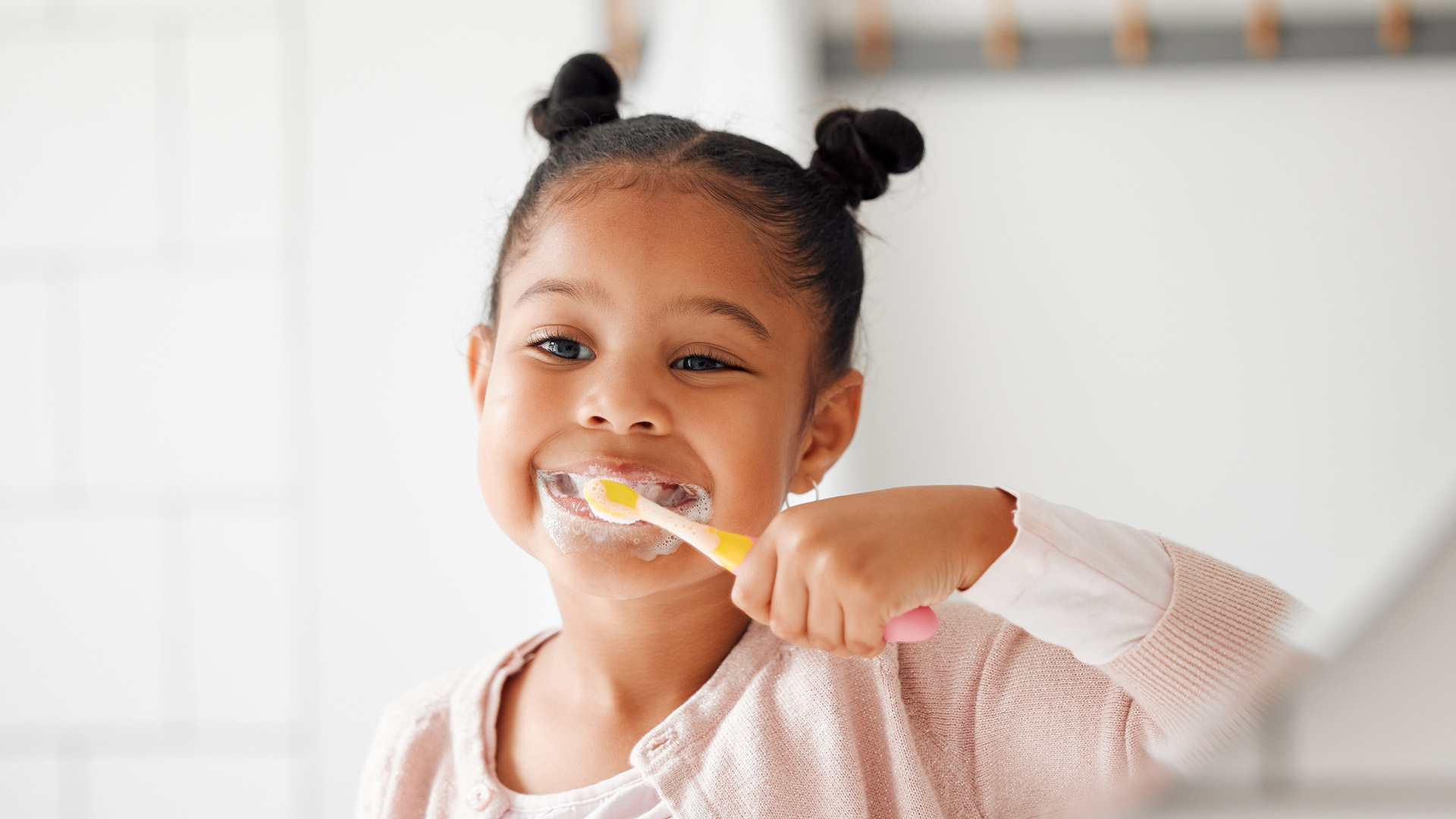
Many wait too long. Brushing starts as soon as the first tooth appears, not later. That tiny white dot matters. Plaque forms quickly, even on baby teeth. Milk sugars cling. Bacteria arrive early. Waiting allows decay to begin. No eruption is too small. Dentists don’t recommend delay. Starting early builds habits. It also prevents resistance later.
Use a smear of toothpaste the size of a grain of rice at first
More doesn’t mean better. Use a smear of toothpaste the size of a grain of rice at first. Fluoride matters, but excess isn’t safer. Swallowing risk exists. Toddlers don’t spit reliably. That’s okay. The smear minimizes ingestion while protecting enamel. Gradually, the amount increases. By age three, a pea-sized blob replaces the smear. But age isn’t the only guide. Spitting without swallowing is the signal.
Lay your child in your lap with their head cradled for better control
Position changes everything. Lay your child in your lap with their head cradled for better control. Facing you, not away. You see more, reach more. Wiggling becomes manageable. Arms stay still. Some use a changing pad for comfort. Others sit cross-legged on the floor. Consistency beats creativity. Try different setups. What matters is access and calm.
Two minutes isn’t realistic, but thorough coverage is more important
Time doesn’t guarantee success. Two minutes isn’t realistic, but thorough coverage is more important. Focus on all sides—front, back, and chewing. Use a circular motion. Don’t scrub. Gums are soft. Go gently near the gumline. The process may take 90 seconds. Or 45. What matters is surface contact. Missed spots breed decay. Toddlers move, so move with them. Adapt your rhythm.
If resistance starts, switch to distraction—not force
Meltdowns happen. If resistance starts, switch to distraction—not force. A song helps. So does a mirror. Some toddlers love copying you. Brush your teeth together. Count aloud. Tell a silly story. Force creates fear. Trust builds cooperation. A skipped session once in a while isn’t failure. Consistency over time matters more.
Letting toddlers hold their own brush doesn’t mean letting go entirely
Independence feels good. Letting toddlers hold their own brush doesn’t mean letting go entirely. Give them a turn. Then take yours. Call it “your turn, my turn.” Shared brushing gives autonomy while ensuring coverage. They mimic what they see. Supervision is non-negotiable. Kids under six need help, even when they want independence.
Choose a soft-bristled brush with a small head and chunky handle
Tools change the task. Choose a soft-bristled brush with a small head and chunky handle. Toddlers grip better with thicker handles. Soft bristles protect sensitive gums. Replace the brush every three months—or sooner if frayed. A damaged brush scratches, not cleans. Some children prefer silicone brushes. Try and observe. What matters is comfort and reach.
Night brushing is more important than morning
Timing has weight. Night brushing is more important than morning. Overnight, saliva production drops. Mouths dry out. This allows bacteria to grow faster. Cleaning before bed disrupts that cycle. Food debris, milk residue, or juice sugars linger otherwise. Morning brushing feels fresh, but night brushing prevents decay. If only one session happens, let it be bedtime.
Lift the lip to see if plaque is building near the gumline
Visibility helps. Lift the lip to see if plaque is building near the gumline. Many miss this spot. Upper front teeth collect residue from bottles or breastfeeding. This area decays early. White spots mean demineralization has begun. Catching it early changes outcomes. Brushing here must be deliberate. Small circles—not scrubbing—work best.
If your toddler resists brushing, don’t assume it’s behavioral
There might be more. If your toddler resists brushing, don’t assume it’s behavioral. Teething pain flares sensitivity. Ulcers, sore spots, or erupting molars hurt. Inspect gently. Pain changes cooperation. Adjust your approach. Use cooler water. Try different brushes. Patience replaces pressure. If problems persist, consult your dentist. They may spot what you can’t.
Toothpaste flavor can make or break cooperation
Taste matters. Toothpaste flavor can make or break cooperation. Mint feels spicy to some toddlers. Berry, banana, or bubblegum might work better. Let them choose. It gives ownership. But avoid swallowing temptation. Stick to brands designed for children. Adult pastes contain too much fluoride for young stomachs. One tube doesn’t fit all.
Make brushing part of a fixed routine, not a daily debate
Routine calms chaos. Make brushing part of a fixed routine, not a daily debate. Link it to something constant. After pajamas. Before storytime. Right after bath. Predictability reduces protest. Ritual gives structure. Kids thrive on repeated patterns. Less surprise means less resistance. Repetition builds compliance.
Don’t reward brushing with sweets or food
Incentives have side effects. Don’t reward brushing with sweets or food. That reverses the purpose. Brushing removes sugar, not earns it. Stickers, stamps, or songs work better. Some use charts. Others offer extra playtime. Avoid edible rewards. They confuse the message. Brushing is basic care, not an achievement.
The toothbrush doesn’t reach between teeth without help
Surfaces hide more. The toothbrush doesn’t reach between teeth without help. Flossing starts when teeth touch. Usually around age two or three. Use floss picks or flexible holders. Children rarely tolerate string floss. Target molars first. Once a day is enough. Bedtime works best. It’s not perfection—it’s habit.
Brushing without cleaning the tongue leaves bacteria behind
One spot gets ignored. Brushing without cleaning the tongue leaves bacteria behind. Halitosis follows. Tongue scrapers aren’t necessary. The brush is enough. Gently stroke forward once or twice. Toddlers may gag. That’s normal. Be quick, not forceful. Over time, tolerance builds. Mouth health means all surfaces count.
Cavities in baby teeth aren’t harmless—they can spread
Misbelief causes damage. Cavities in baby teeth aren’t harmless—they can spread. Infection reaches the pulp fast. Pain follows. So does abscess. Neighboring teeth risk exposure. Chewing shifts. Eating becomes selective. Baby teeth hold space for permanent ones. Losing them early causes crowding later. Decay matters, even if the tooth will fall out.
If nighttime milk or juice is unavoidable, wipe teeth afterward
Some habits linger. If nighttime milk or juice is unavoidable, wipe teeth afterward. A wet cloth helps. Remove surface sugars. It’s not brushing—but it’s better than nothing. Water rinses also help. If possible, offer only water after brushing. Habits take time to change. Start where you can.
Dentists recommend the first dental visit by age one
Timing surprises many. Dentists recommend the first dental visit by age one. It’s not about cleaning. It’s about early prevention. Monitoring development. Checking eruption patterns. Guiding habits. These early visits build familiarity. Fear lessens when clinics feel routine. Waiting until problems arise complicates trust.
Avoid giving the brush to chew on between sessions
Biting isn’t brushing. Avoid giving the brush to chew on between sessions. Bristles wear down. Gum trauma follows. Kids explore with mouths. But chewing damages the tool. Offer teething toys instead. Brushes are for cleaning—not soothing.
Small improvements matter more than instant success
Progress isn’t linear. Small improvements matter more than instant success. Some nights go smoothly. Others don’t. Don’t expect perfection. Focus on effort. Build tolerance. Brushing well once beats brushing poorly twice. Celebrate calm, not completion.
